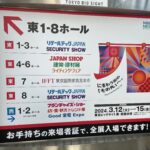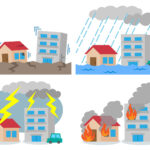Differences Between 1:1 and 1:N
Mofiria supports two types of authentication method, 1:1 authentication (verification) and 1:N authentication (identification).
1:1 authentication (verification) is a method that specifies one finger vein data for the person to be authenticated and compares with their actual finger (vein) placed on the FVA device.
On the other hand, 1:N authentication (identification) picks up one person from multiple pre-enrolled finger vein data just by placing a finger on the device.
Both methods run a different process internally. While 1:1 returns one answer whether it is matched or not, 1:N executes a matching process with all candidates even if a good one is found in the middle of the whole process. So it can find multiple candidates.
Which Method Is Suitable?
Needless to say, 1:N is much more convenient since a user doesn’t need to do anything other than placing their finger. Actually, I misunderstood that biometrics itself meant a kind of identification process before working for mofiria Corporation.
However, 1:N has some limitations compared with 1:1. For example, the accuracy of 1:N may happen to be lower than 1:1 since the candidate to be compared is not one. Also, it takes longer processing time since it always executes the matching process with all enrolled data.
For any applications that don’t need severe accuracy, applying 1:N is also good. However, we basically recommend 1:1 for the applications that handle money, assets or confidential information.

Mofiria’s 1:N authentication
Mofiria’s 1:N solution has a limitation that it is up to 1:1000. Mofiria’s basic concept for biometrics is to return the result within 2 seconds. Therefore, Mofiria limits it to 1:1000 by assuming the process would be done using a server with a general specification.
When a user enrolls their biometrics data in our case, we usually recommend enrolling multiple fingers for each user since they may get injured on their enrolled one. If each user enrolls two fingers, our 1:N solution supports up to 500 users.
Therefore, when the number of target user exceeds 500, they need to narrow down the target somehow before the authentication process. In such case, area, region, first letter of name, birth month, division name or so would be used.
Since this case needs a similar operation as 1:1, however, they may want to adopt 1:1 authentication with much higher accuracy.
So what would 1:N be used for?
For example, any solutions that don’t need too severe matching accuracy or that put a priority on usability and convenience.
Some people say 1:N authentication is just the real value for biometrics.
So Mofiria continues research and development for realizing 1:N authentication with more convenience and higher ability.
Author of this article
 | Tomohiro Yamada mofiria Corporation Senior Sales Manager General Manager in Marketing |



